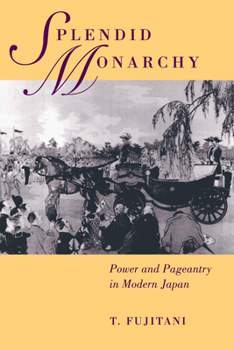Splendid Monarchy: Power and Pageantry in Modern Japan Volume 6
(Book #6 in the Twentieth Century Japan: The Emergence of a World Power Series)
Select Format
Select Condition 
Book Overview
Using ceremonials such as imperial weddings and funerals as models, T. Fujitani illustrates what visual symbols and rituals reveal about monarchy, nationalism, city planning, discipline, gender, memory, and modernity. Focusing on the Meiji Period (1868-1912), Fujitani brings recent methods of cultural history to a study of modern Japanese nationalism for the first time.
Format:Paperback
Language:English
ISBN:0520213718
ISBN13:9780520213715
Release Date:February 1998
Publisher:University of California Press
Length:320 Pages
Weight:1.00 lbs.
Dimensions:0.8" x 6.0" x 9.0"
Customer Reviews
1 rating
a textbook for the study of Japan
Published by Thriftbooks.com User , 21 years ago
this book shows how Japanese customs are made up by the successors of Meiji. most people think that the emperor of Japan has been lasted from the start of Japan, which is very wrong. After the success of Meiji, they made all the customs including weddings, images of the emperor, etc. From inventing all these things, they could easily plant into the people's mind that the emperor has been there watching his people from the beginning of the country. The author, Takashi Fujitani provocates that this is the basement of Japanese nationalism.





